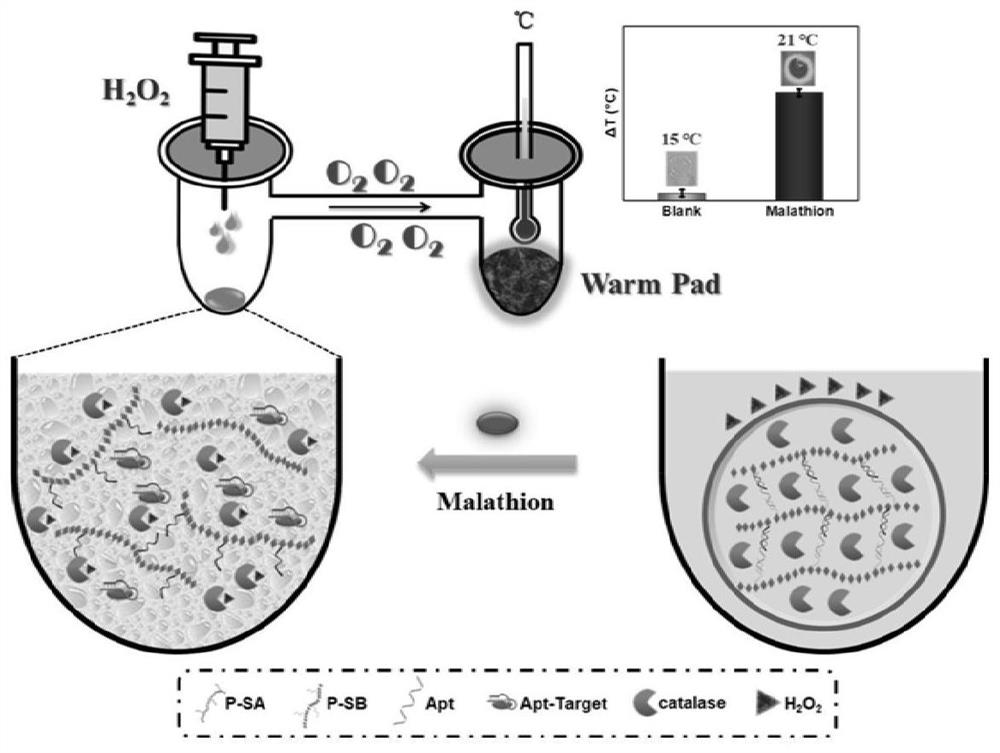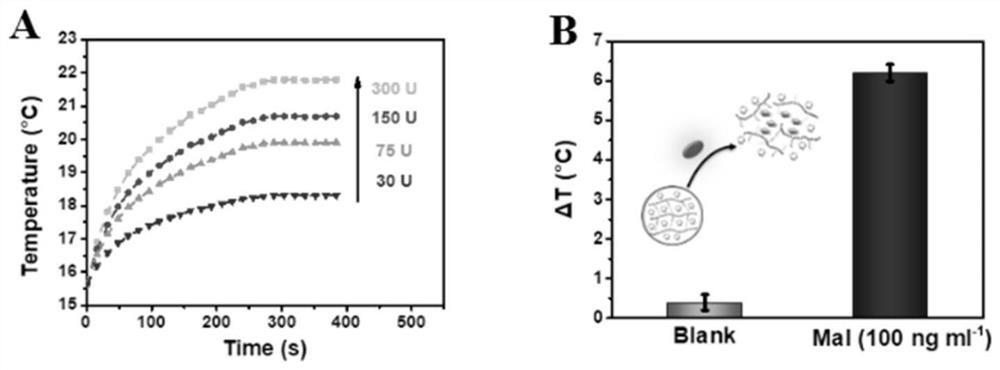Temperature type biosensor and method for detecting target aptamer by using temperature type biosensor
A biosensor and aptamer technology, applied in biochemical equipment and methods, microbial measurement/inspection, biomaterial analysis, etc., to achieve the effect of wide detection range, high selectivity temperature detection, and low lower limit
- Summary
- Abstract
- Description
- Claims
- Application Information
AI Technical Summary
Problems solved by technology
Method used
Image
Examples
Embodiment 1
[0043] (1) Disperse 100 μM S-A and S-B with acrylamide groups in 10 mM Tris-HCl buffer (pH=7.4) containing 4% acrylamide, 200 mM NaCl, 1 mM EDTA, respectively, and bubble with nitrogen for 5 min to remove the air. Then, 1.4% (v / v) freshly prepared catalyst (0.05 g APS, 25 μL TEMED, 0.5 mL deionized water) was added to the above mixture to promote the polymerization of acrylamide to form polyacrylamide polymer. Then, nitrogen bubbling was carried out for 5 min to form polymer chain A (PS-A) and polymer chain B (PS-B); after that, CAT (300 U) was added thereto, and PS was mixed with 1:1:1 molar ratio - A and PS-B were mixed with malathion aptamer (both at a concentration of 0.1 mM), and nitrogen gas was bubbled for 5 min. Finally, the mixed solution was incubated at 25 °C for 20 min to form a 3D DNA hydrogel cross-linked by aptamers that encapsulated CAT.
[0044] (2) Incubate 10 μL of different concentrations of target malathion with the 3D DNA hydrogel prepared in step (1) f...
PUM
 Login to View More
Login to View More Abstract
Description
Claims
Application Information
 Login to View More
Login to View More - R&D
- Intellectual Property
- Life Sciences
- Materials
- Tech Scout
- Unparalleled Data Quality
- Higher Quality Content
- 60% Fewer Hallucinations
Browse by: Latest US Patents, China's latest patents, Technical Efficacy Thesaurus, Application Domain, Technology Topic, Popular Technical Reports.
© 2025 PatSnap. All rights reserved.Legal|Privacy policy|Modern Slavery Act Transparency Statement|Sitemap|About US| Contact US: help@patsnap.com



